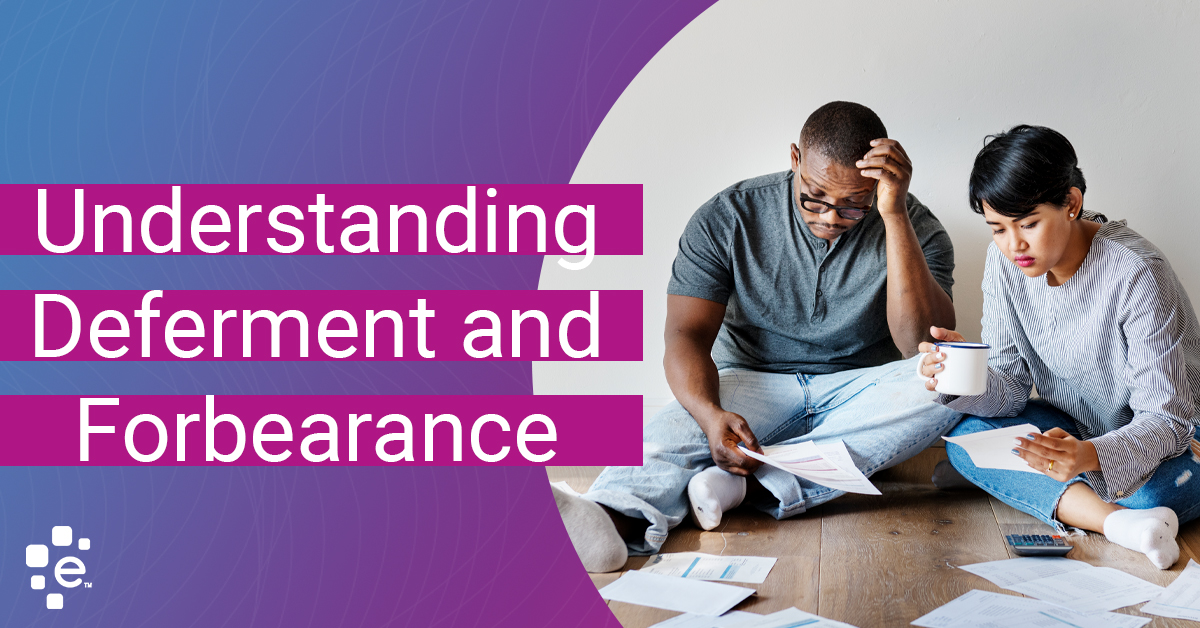
The COVID-19 pandemic reshaped Americans’ personal and financial lives. If you find yourself in a situation that could make fulfilling your credit card, loan, or mortgage payments challenging, you may be wondering what relief options are available to help navigate these changes.
The good news is there are options if you need financial support during this time. However, it can be difficult to know where to start. The two primary relief avenues are deferment and forbearance. While different in practice, these terms are often used synonymously, even by those within the credit industry.
While similar at first glance, there are significant differences between forbearance and deferment agreements. While both are intended to pause or reduce payments for a certain period, there are variances when it comes to how you must repay the delayed payments.
It’s important to understand how these two options work when speaking with your lender, so you can choose the best path for your personal financial situation. Whichever avenue you take, remember that deferment and forbearance are both temporary measures and shouldn’t be used as permanent solutions.
Pausing Payments with Deferments
You may have seen the term deferment in the news more recently with mortgage relief and student loan deferral options. So, what exactly is deferment? Through this option payments are put on pause and deferred until a later date. This is a longer-term strategy that enables you to pay back your loan over time, when your financial situation puts you in a position to do so responsibly. Interest can sometimes accrue during a deferment period, depending on the type of loan and the lender you’re working with, so it is important to talk with your lender to fully understand your agreement terms.
Periods of deferment vary in length – in some cases lasting as long as your financial situation requires. You should opt for deferment if your financial situation or an unexpected event, such as being let go from your job, creates an undue burden that makes it impractical or impossible to keep up with regular payments.
Temporary Relief with Forbearance
The other option to discuss with your lender is forbearance. Whereas deferment allows you to pay back a loan over time, forbearance is a relief strategy that typically requires the borrower to pay a lump sum and accrued interest at the end of the forbearance period. For example, if you paused payments for five months, at the end of those five months, you would pay your lender the total of paused payments and the accrued interest.
If you’re seeking forbearance for federal student loans, there are two different types of forbearance: mandatory and discretionary. With mandatory forbearance, lenders are required to pause payments if a borrower meets a set of financial criteria that could prevent them from making payments on time. Eligibility for mandatory forbearance includes: enrolment in a medical or dental residency program, payments on your federal student loans being greater than 20% of your total monthly gross income, and other circumstances that could hinder your ability to make payments. Confirm whether you’re eligible with your lender.
Discretionary forbearance means the lender makes the decision at their discretion to put payments in forbearance based on your unique financial situation.
Forbearance is generally a shorter-term option and the avenue to take if you don’t qualify for deferment. Consider forbearance in times of true financial crises, such as an unexpected medical bill, that would temporarily inhibit you from making a monthly payment.
How to Work with Your Lender on Relief Options
While discussing these options with your lender, it is critical to have a full understanding of what the agreement will entail – from interest rates to your timeline for payment – to ensure you’re in the best position to fulfill the agreement with your lenders once your payments resume.